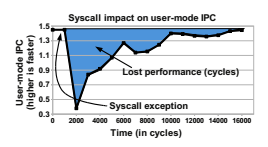X86 Serializing Instructions
/ Spectre Windows, Linux, and macOS have all received that significantly alter how the operating systems handle virtual memory in order to protect against a hitherto undisclosed flaw. This is more than a little notable; it has been clear that Microsoft and the Linux kernel developers have been informed of some non-public security issue and have been rushing to fix it. But nobody knew quite what the problem was, leading to lots of speculation and experimentation based on pre-releases of the patches. Now we know what the flaw is. And it's not great news, because there are in fact with similar impact, and only one of them has any easy fix.

How to Benchmark Code Execution Times ®on Intel IA-32 and IA-64 Instruction Set Architectures 2 Abstract This paper provides precise methods to measure the clock. Dec 4, 2009 - In my recent post about memory barriers and atomics(or the PDF version here), I stated a number of times that x86 (or x86-64) was among the platforms that provided strongly ordered. Performs a serializing operation on all store-to-memory instructions that were issued prior the SFENCE instruction. Download >>Download X86 serializing instructions Read Online >>Read Online X86 serializing instructions The Time Stamp Counter is a 64-bit register present on all x86 processors The programmer can solve this problem by inserting a serializing instruction, I've used intrinsics to write some simple SIMD code for SSE2, and they're pretty handy.
The flaws have been named Meltdown and Spectre. Meltdown was independently discovered by three groups—researchers from the Technical University of Graz in Austria, German security firm Cerberus Security, and. Spectre was discovered independently by Project Zero and independent researcher Paul Kocher. Le Retour De K2000 Torrent Saison 2. At their heart, both attacks take advantage of the fact that processors execute instructions speculatively. All modern processors perform speculative execution to a greater or lesser extent; they'll assume that, for example, a given condition will be true and execute instructions accordingly.
If it later turns out that the condition was false, the speculatively executed instructions are discarded as if they had no effect. However, while the discarded effects of this speculative execution don't alter the outcome of a program, they do make changes to the lowest level architectural features of the processors.